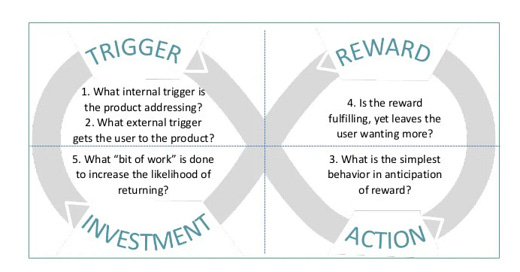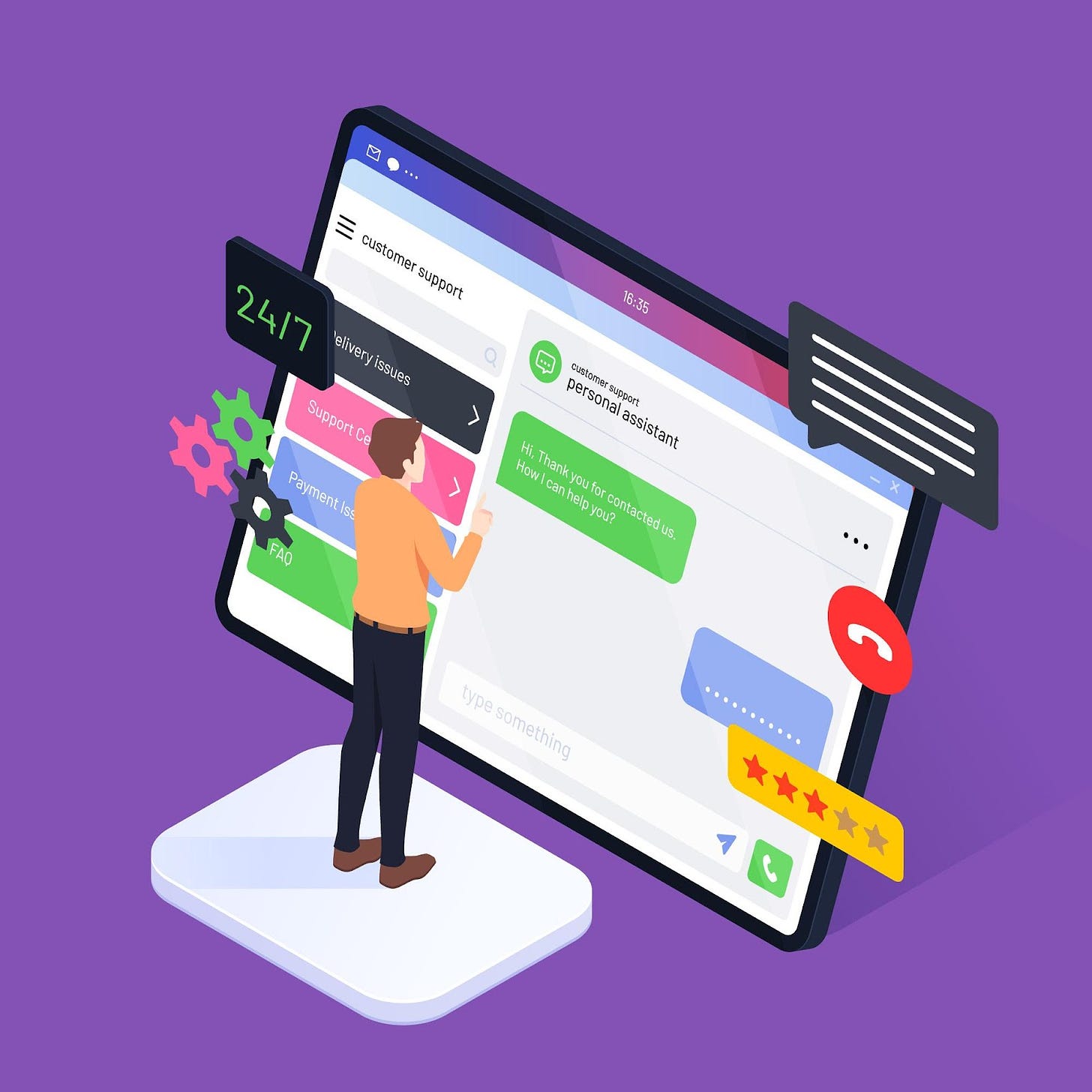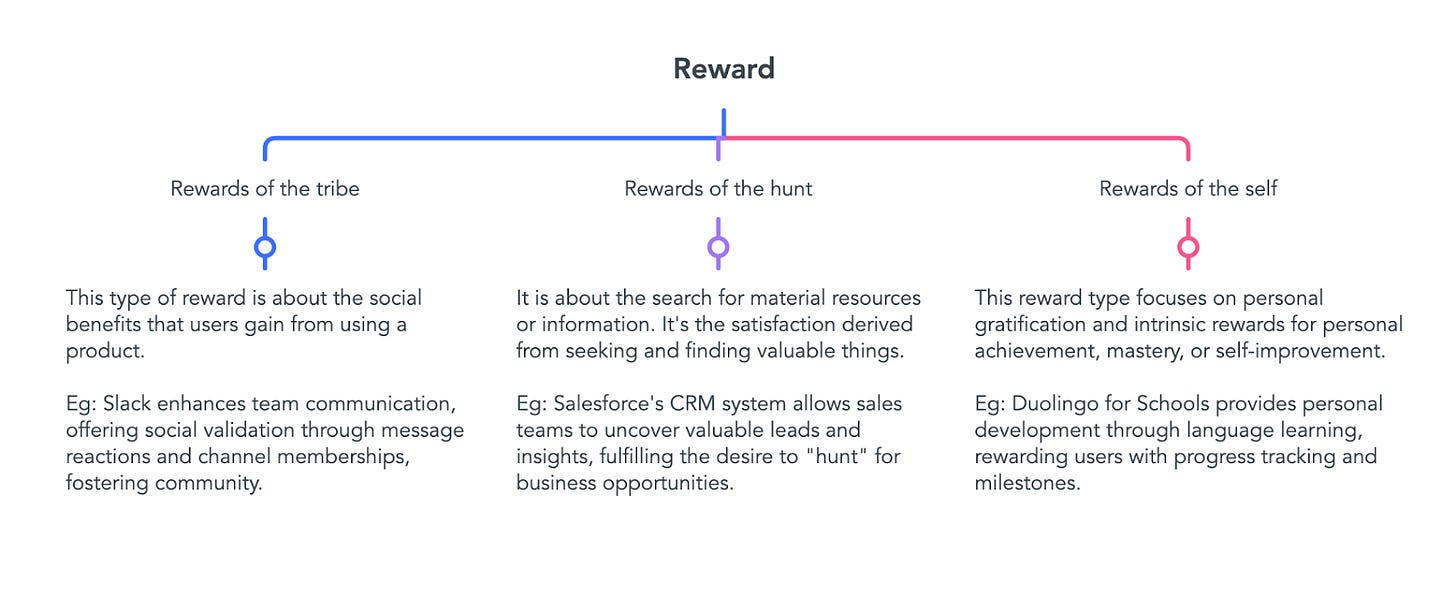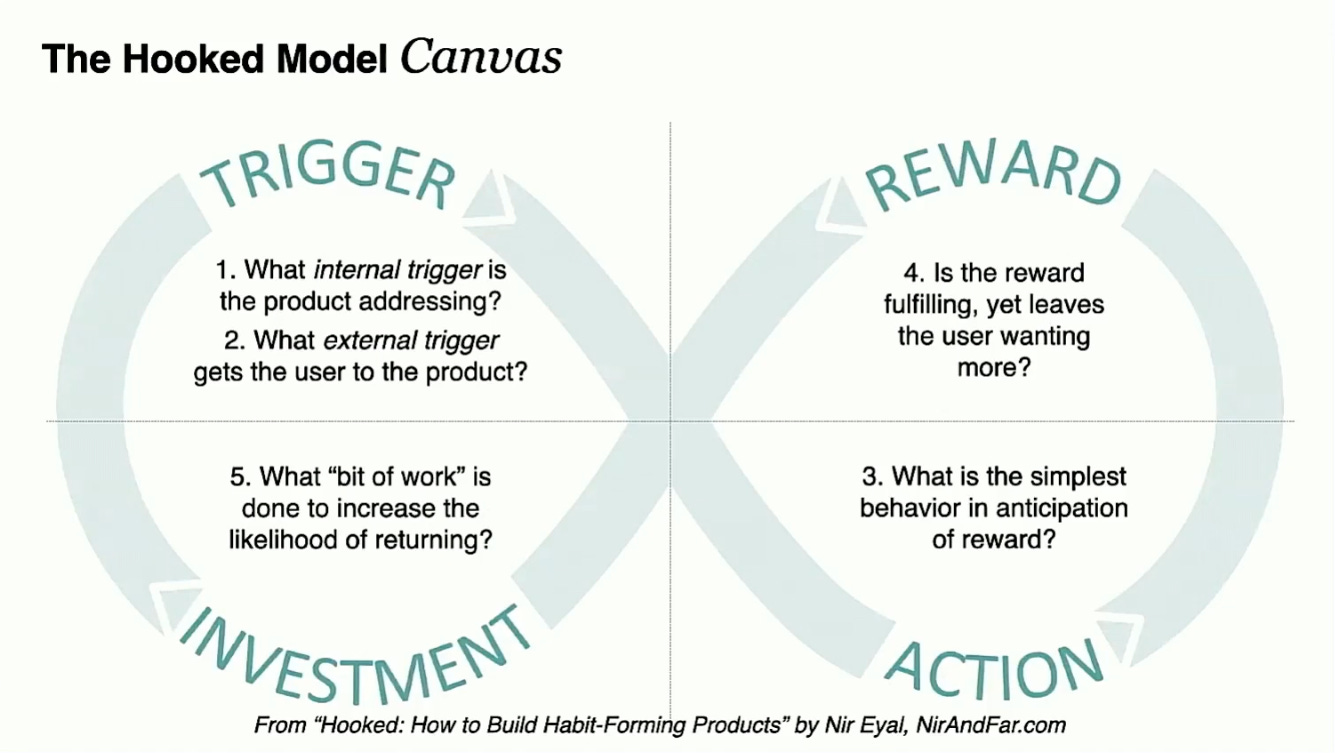Hello, all you product-loving folks! 💜
Welcome to this week's edition of Product Café, your weekly cup of coffee for everything product management, startups, AI, and more. ☕
Building Habits
Every morning, my routine starts with the automatic scroll through Instagram or a quick glance at Slack messages and emails. These apps have seamlessly become part of my everyday life, turning into habits that I don't even consciously think about. Nir Eyal, the author of ‘Hooked’ and ‘Indestructible,’ dives into this phenomenon in his book "Hooked."
Eyal's principles shed light on the secrets of creating habit-forming products. Whether you're a business stepping into the world of product development or one that's ace at acquiring customers but struggles with keeping them, the Hook Model is your playbook.
It guides you to craft products and use cases that encourage frequent use and make your offering an integral part of users' routines, building customer loyalty.
So, what is a habit?
By definition, habit is an impulse to do a behavior with little or no conscious thought! All the habit-forming successful products have embedded a hook into their product. “A hook is an experience designed to connect the users’ problem to your product with enough frequency to form a habit.”
In order for your product to become a habit, the product should be frequently used within a week’s time or less. If not, it is hard to make it into a habit. If the users’ product usage frequency is less, you can use the phases of the hook model to make your product habitual for your users.
There are four phases to the hook model;
Trigger
Action
Reward
Investment
Trigger
Triggers are things that prompt users to do an action. Triggers are two types- external and internal.
External Triggers
External triggers are a ping, ding, or a ring! They are cues from our environment that tell us what action to take next. They're the direct prompts that engage us with a product, often before any habit is formed.
Think of them as push notifications, emails, or even a friend mentioning an app—that nudges you towards a specific behavior. For instance, when you see a notification from Slack, it's an external trigger prompting you to open the app and check your messages.
The main job is to catch your attention and direct you towards the product or service. Over time, as you interact more with the product, the reliance on external triggers ideally decreases as the behavior becomes more habitual.
Internal Triggers
Internal triggers, on the other hand, are cues that come from within. They're often based on negative feelings or states, like boredom, loneliness, frustration, or the need for social connection. When you find yourself reaching for your phone to open Instagram because you're feeling bored or lonely, that's an internal trigger at work.
The brilliance of a well-designed product lies in its ability to link these internal triggers to the use of the product.
For example, every time users feel a particular way (bored, anxious, curious), if your first instinct is to engage with a product, your product has successfully created a habit in their life. The goal for any habit-forming product is to become the go-to solution for a specific internal trigger.
The next phase in the hook model is Action.
Action
Action is the simplest behavior that a user makes in anticipation of a reward. When a user experiences a psychological itch or pain, they act to get relief. If your product addresses that itch or pain, they will be drawn to make an action by using your product.
Integrating BJ Fogg's Behavior Model into the action phase of the Hook Model offers a deeper understanding of how to design for user behavior effectively.
Fogg's model (B=MAP) posits that for a behavior (B) to occur, three elements must converge at the same moment: Motivation (M), Ability (A), and a Prompt (P), which aligns closely with the action phase in Nir Eyal's Hook Model.
Motivation🤩
Motivation is the energy for an action. Fogg identifies three core motivators: pleasure/pain, hope/fear, and social acceptance/rejection. In the context of the Hook Model, understanding what motivates your users is crucial.
When designing the action phase, ask what emotional states drive your users towards or away from your product. Tailor your product's experience to leverage these motivators, making the action not just possible but desirable.
Ability😌
This aspect focuses on how easy it is for users to take the desired action. Fogg emphasizes simplicity as a key factor in increasing ability. In practical terms, this means reducing friction wherever possible.
For a SaaS product, this could mean simplifying the sign-up process, reducing the number of steps to achieve a task, or enhancing the user interface for better usability. The easier it is for users to take the action, the more likely they will do so, especially when motivated.
Prompt 👉
In integrating this with the Hook Model, ensure that your product not only provides clear prompts that guide users to the desired action but also that these prompts are timely and contextually relevant, appearing at moments when users are most motivated and able to take action.
Reward
Reward is the satisfaction or delight you get from the action. There are three types of rewards:
You should ensure that your product addresses what the users seek by adding a pinch of mystery to keep them hooked.
Investment
Investment is the fourth phase in the hook model. In this phase, your user puts forward some kind of investment in your product for their future benefit.
For instance, uploading their data to your product. The investment doesn't necessarily result in immediate gratification but sets the stage for future rewards, making the user more likely to return.
When it comes to B2B SaaS products, the investment stage may take various forms, such as users customizing their dashboard using a product management tool, contributing customer data, or setting up integrations and workflows that adapt the software to their business processes.
These investments enhance the usefulness of the service for the user, increase the costs of switching to another product, and boost the probability of sustained usage.
Here are 5 questions you should answer that will help you streamline your product’s direction👇
Let's Make Magic Happen
Creating a habit-forming product is both an art and a science. By understanding and applying the principles of the Hook Model, you can design products that not only solve users' problems but also become an essential part of their daily routines.
It's about creating a product experience that users return to, time and again, not out of necessity but out of habit. As we continue to explore and innovate in the product space, let's keep these models in mind to build products that attract, retain, and engage users for the long haul.
Always remember,
“It’s not the best product that wins, it is the product that captures the monopoly of mind.”
Nir Eyal
What’s brewing on Zeda.io’s side?☕️
Our roadmaps are the talk of the town now😉. Being a product management platform, we often hear product managers grappling with questions like "What's our next step?" and "Why is this a priority now?"— echoes that reverberate across various organizational realms.
Navigating these queries requires more than just a simple roadmap; it demands a strategic guide that harmonizes diverse teams, transparently communicates priorities, and propels everyone toward a shared product vision. This is where Zeda.io steps into the spotlight, reshaping how product roadmaps are conceived and executed. Zeda.io offers a suite of impactful features to meet this challenge head-on.
Key Features
Multiple Roadmap Templates
Swift planning for development cycles.
Standardized communication to teams and stakeholders.
Effective representation of multiple products or portfolios.
Easy-to-Use Customizations
Making roadmaps distinctive with clear features.
Maintaining relevance for different stakeholders.
Transparent & Shareable Roadmaps
Secure sharing with password protection.
Public roadmaps for real-time customer feedback.
Why Zeda.io Matters
Align teams with a shared vision.
Prioritize customer needs for revenue growth.
Save time with ready-made templates.
Communicate clearly through customization.
Bonus: CSV Import Update
Zeda.io's enhanced CSV import simplifies data migration:
Tailored import fields for feedback, features, companies, and contacts.
Super easy column mapping and creation of custom fields.
Your Roadmap, Your Growth
With Zeda.io, your roadmap becomes more than a timeline – it's a strategic tool. Book a demo today and embark on a journey towards roadmaps that make a difference. Happy building! 💜
It’s hard to explain what a Product Manager does, we get it. But you know what’s not that hard- sharing this newsletter with your friends and colleagues!














